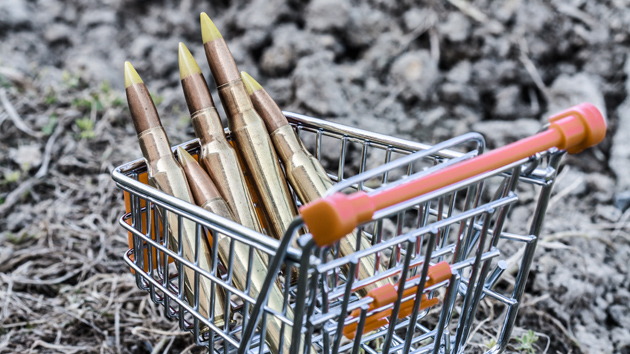
<a href="http://www.thinkstockphotos.com/image/stock-photo-gun-and-constitution/163270563/popup?sq=gun/f=CPIHVX/s=DynamicRank">Stephanie Frey</a>/ThinkStock
The Supreme Court smacked down the National Rifle Association on Monday, when the justices voted 5-4 to ignore the gun group’s arguments and uphold a law that forbids lying about buying a gun for another person.
But Monday’s ruling was only the latest in a string of setbacks the high court has dealt the NRA and other national gun groups. The gun lobby was flying high after its 2010 victory in the McDonald v. Chicago, in which the justices ruled that the Second Amendment applies to state and local governments. But since then, the Supreme Court has refused to take up another major Second Amendment case. During the court’s latest term, which began in October 2013, the justices have rejected at least five high-profile petitions supported by the NRA and other pro-gun lobbying groups, and ruled against two challenges backed by pro-gun organizations that they did consider. Here are the highlights:
- In October, the Supreme Court declined to hear a NRA-backed case concerning concealed carry rights in Maryland.
- In January, against the wishes of the Gun Owners of America and the Second Amendment Foundation, the court left in place a lower court ruling against a Montana law exempting firearms made and kept in the state from federal regulation.
- In February, the Supreme Court declined to hear a case the NRA brought against the Bureau of Alcohol, Tobacco, Firearms, and Explosives (ATF) in which the group was aiming to legalize the sale of handguns to Americans between the ages of 18 and 20.
- Also in February, the Supreme Court declined to hear a case where the NRA challenged a Texas law forbidding Texans between the ages of 18 and 20 from obtaining a concealed-carry permit for handguns.
- In March, the Supreme Court unanimously ruled the federal law barring domestic violence offenders from owning guns applies to a broad range of abusers. (In this case, the NRA did not file a brief against the government, although the Gun Owners Foundation did.)
- In May, the Supreme Court declined to hear Drake v. Jerejian, a major Second Amendment case that challenged a New Jersey law barring most citizens from toting handguns around in public unless they can prove “justifiable need.” (The NRA had argued that citizens’ right to bear arms applies everywhere.)
Eugene Volokh, a law professor at the University of California-Los Angeles, says the Supreme Court’s recent refusal to rule on major gun lawsuits isn’t necessarily unusual, since the high court only hears a small percentage of all cases. But Adam Winkler, another law professor at UCLA, says he’s “definitely” seen a trend in the Supreme Court dealing blows at the NRA since the agency’s last big win in 2010, and he’s seen lower courts consistently fall on the side of gun control. “Gun control is dead everywhere except the courts,” Winkler says. “The courts are not as much of a victim to political pressures, and the judges rightfully see while there’s a right to bear arms, there’s plenty of room for gun control.” (The NRA did not respond to comment.)
But gun control advocates aren’t satisfied with their legal victories.”What’s shocking and appalling,” says Jonathan Lowy, the director of the legal action project at the Brady Center to Prevent Gun Violence, “is not that courts have recognized that the constitution allows for sensible gun laws. It’s that Congress hasn’t acted.”













